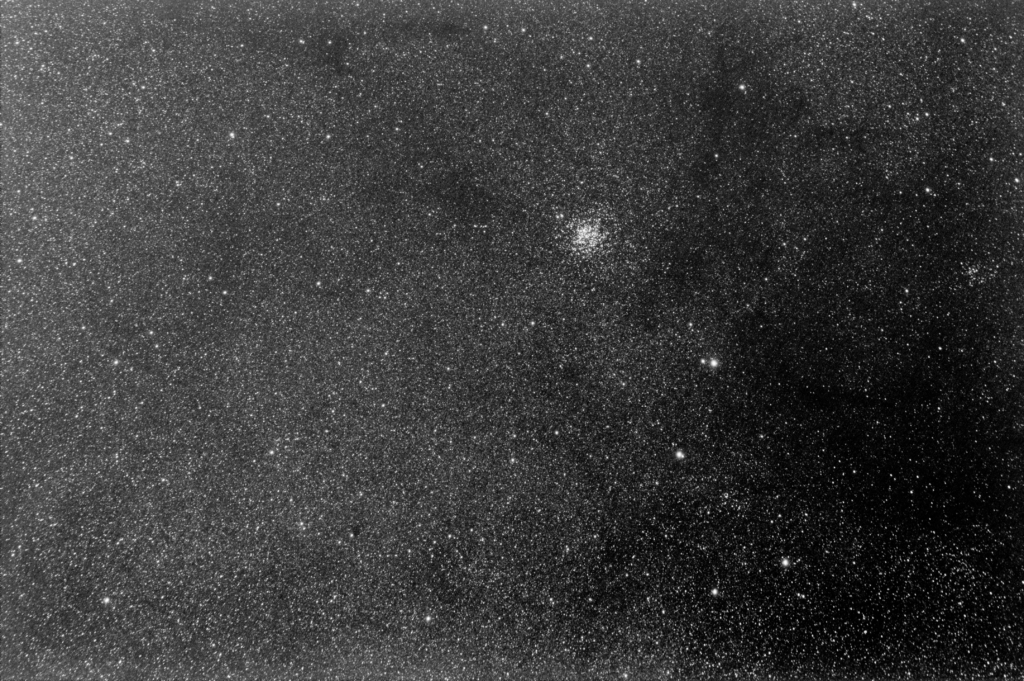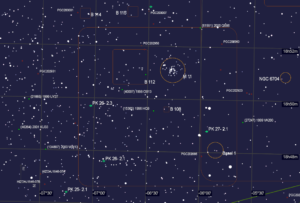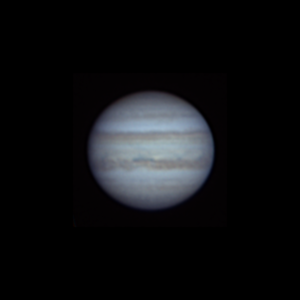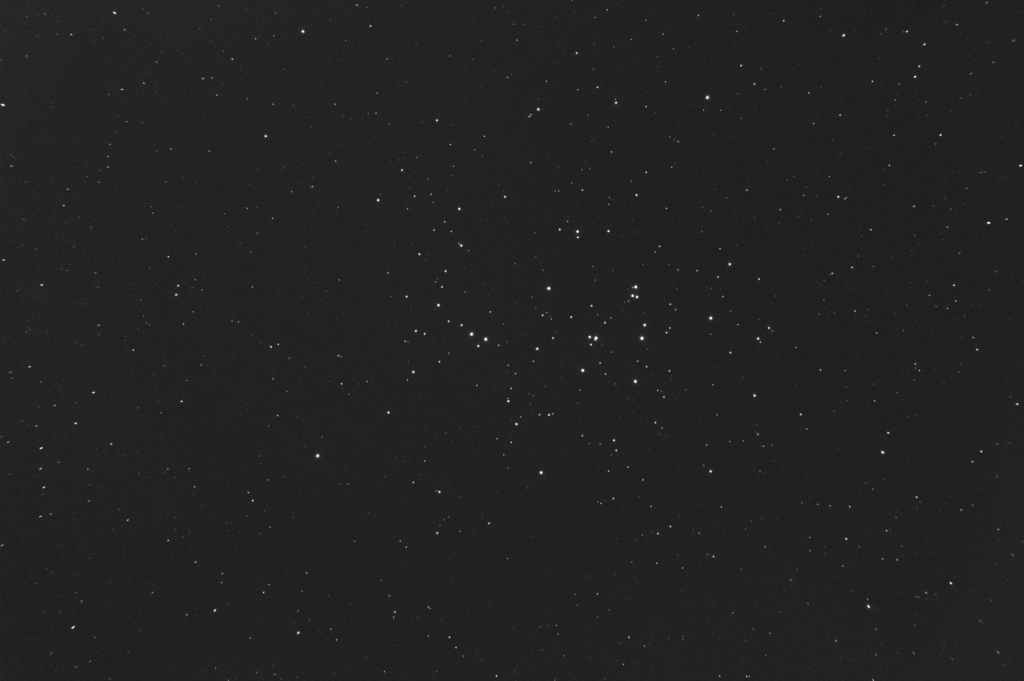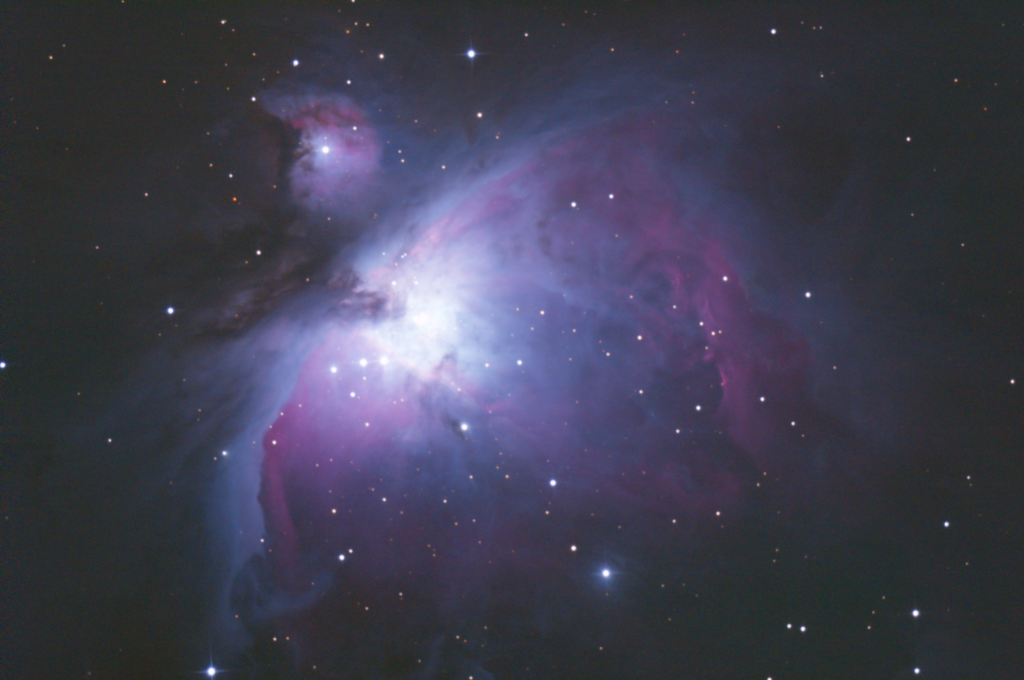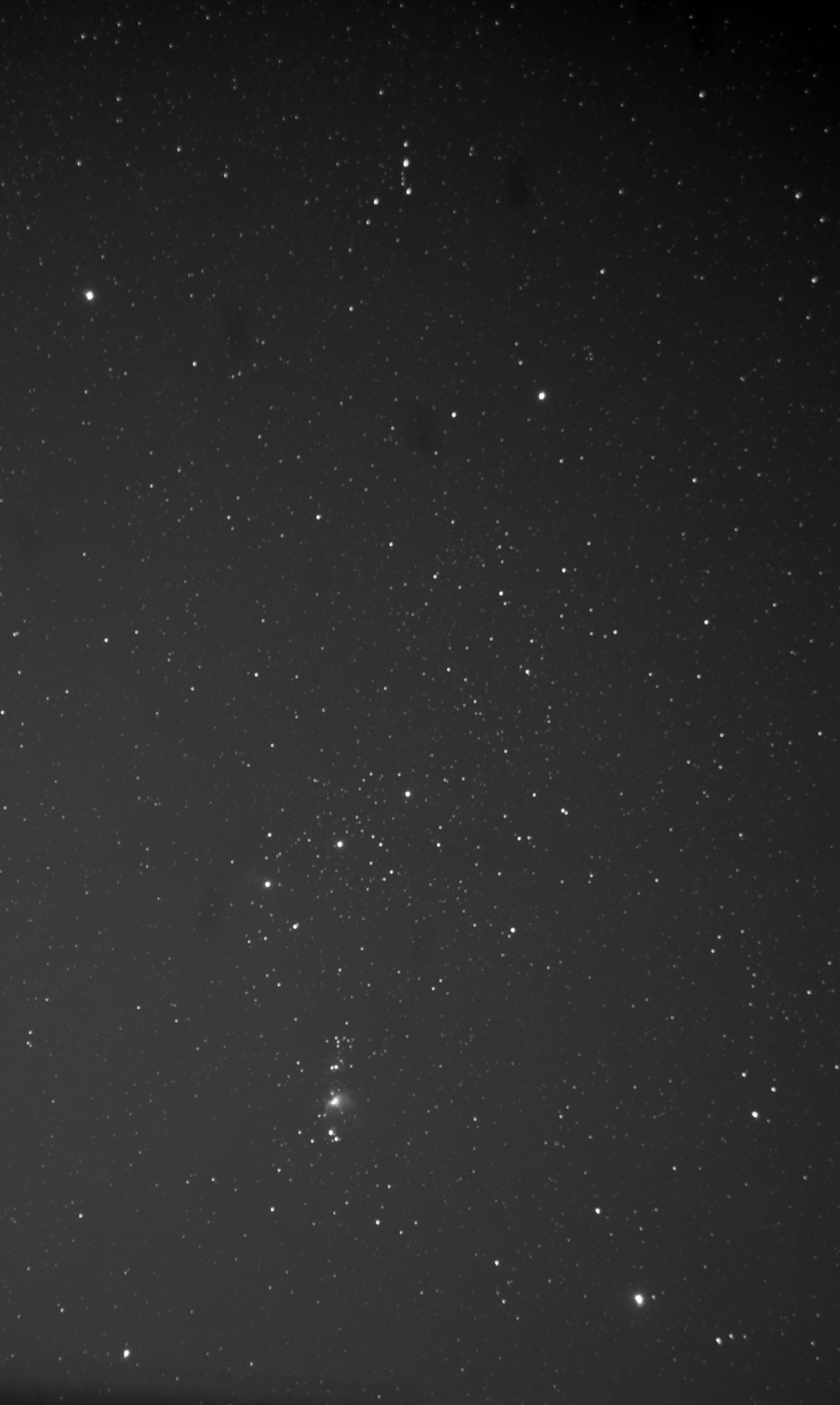While waiting for Jupiter and Saturn to clear my tree line, I did some more testing with my wider FOV scope that has a simple DSLR mounted on it. I am still manually focusing the system but it doesn’t take too long to accomplish. The recently installed flattener corrects the distortion apparent in the stars at the corners of each image.
The target for tonight’s testing was Messier 11 (The Wild Duck Cluster). Legend has it the cluster was given its name by British Admiral William Henry Smyth (1788-1865). When describing the cluster, the Admiral, a very accomplished astronomer and avid hunter, commented the V-shaped group of stars looked like a flock of wild ducks.
Classified as an open star cluster, the flock is located in the constellation Scutum (The Shield). The constellation is right in the middle of the plane of the Milky Way and towards the center of the galaxy. That is fairly apparent by the sheer number of stars in the image. North is to the right putting M 11 right on the northern edge of the Scutum star cloud. The dark area towards the bottom right side of the image is not a lack of stars. It is a large area of dust and gas dense enough to block the light of more distant stars. Several of these areas were individually cataloged as dark nebulae by American astronomer E. E. Barnard, hence the B numbers on the matching chart.
As can be seen on the constellation chart, Scutum is in the southern sky located between Aquila and Sagittarius. The image and matching chart are rotated 90° to the constellation chart.
Once Jupiter and Saturn cleared the trees I switched over to planetary equipment and was able to get a couple of series of both planets before wispy clouds moved in from the south. As usual, the best Jupiter image was uploaded to NASA’s JunoCam web page for mission planning.
